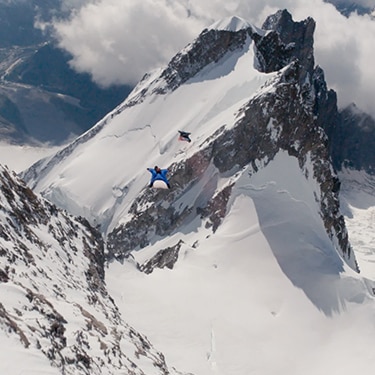'Cromo' eco-thriller shot in 4K with FS7
Cromo is a hit Argentinian eco-thriller TV series that garnered early critical acclaim via a preview screening at the 2015 Toronto Film Festival, followed by selection for the France Series Festival, SeriesMania Festival and Los Cabos Mexico Festival. Commercial success quickly followed with sales to Spain, France, Australia and India, along with a 90-minute movie-length edit for Türkiye. Go behind the scenes of Cromo’s production.
The story is based on real-life events, with a murder investigation soon uncovering links to an environmental disaster in Corrientes. The ecological message continues to resonate today while Cromo’s stunning visuals set a benchmark for 4K production with Sony’s FS7 camcorder.
Nicolás Puenzo, who directed the series with his sister Lucia and Pablo Fendrik, reveals his insights into the challenging shoot below.
Did you feel you were pioneering use of FS7 for TV drama at the start?
Yes, definitely. We had not seen any series filmed with this camcorder at the time of our first shoot. Everything was a new discovery. And really it was a joy to work with this camcorder, it responded very well to a hard shoot achieving some startlingly beautiful images!
What was the biggest advantage of shooting with FS7?
Above everything else, the FS7 offers this superb combination of exceptional image quality, sheer usability thanks to its ergonomic form factor and robustness. We filmed in very challenging locations like Antarctica, the Argentine Patagonia on the Perito Moreno Glacier, in Pantanos and more. Shooting in these beautiful, but remote and difficult locations without carrying bulky equipment – while still obtaining first class image quality – was a dream come true. Using covers as necessary, we recorded in the rain, at different times of the day and night, and always obtained very good results. The FS7 never failed us.
In fact, during a sub-zero shoot in Antarctica, our equipment was completely frozen with thick ice covering the monitor and eye-piece. We were convinced this was the end for our FS7, but when we got it back into the shelter and the ice melted it was ready for more action. This was the day I knew we had chosen the right camcorder for the job.

What was it like to work with the camcorder?
It’s just such a practical and effective camcorder for us. The duration of the batteries allowed the team to record every day with 8 or 9 hours of 4K 4:2:2 format using only two batteries and three memory cards. We also found the FS7’s promised 14-stops latitude was real and we found ourselves able to shoot when another camera had to stop due to lack of light. We also enjoyed the exceptional depth-of-field control offered by shooting with a Super 35 sensor.

Did the production primarily use FS7 hand-held or shoulder mounted?
There was a lot of handheld work. The FS7 camcorder is ideal for handheld operation since for me it has the perfect weight. I would say that if it had one more gram or one less gram less it would not be so great.
Were any other specific FS7 features of use? Such as slow-motion?
The SQ mode of the camera is ideal and we made good use of it, especially for Cromo’s title sequence where we filmed in Slow Motion to achieve some very hypnotic images of underwater marine plants.

What tips would you give to people shooting drama with FS7?
I think the key is getting the right lens combinations. The FS7 can capture very sharp imagery and also looks great with lenses that are not extremely sharp. Also the ‘vintage’ lenses fit very well with this camera.
I can also reveal one very specific tip we adopted for Cromo. When I started colour grading the footage we’d shot, I tried adding a little sharpness to the eyes of actors if it was a close-up. In the case of landscapes, I’d add some sharpness to an object near the camera. Since we were shooting with vintage lenses that produced a soft image, adding some finely judged sharpness in post-production helped create a distinct look and prevented the imagery being too soft or dull. I’d never worked with sharpness in post before, but I now believe if used in a very subtle way it is possible to boost the overall quality in the final image. It’s almost like boosting the original imagery’s depth-of-field.
In terms of colour, while testing the FS7 I felt that 4:2:2 Slog-3 delivered very soft and slightly unsaturated colour. So I pushed the colour I would normally use in the lighting to create a more vivid image. I would normally mix colour temperatures and even ‘tint’ the black areas of the frame by adding some colour to the lights that were adding fill light in the dark areas. Then I would grade to darken these areas, getting the desired blacks but retaining a colour tint in these blacks.
What workflow did you use for 'Cromo'?
During the shoot I used Catalyst Browse every night to check the footage. It’s a great tool as it allowed me to quickly add a curve and play with the colour and set up a look to check the footage. It really helped me think about the final look in a very efficient and creative way. It was the perfect set-up to think about what we were doing, share the imagery with other crew members and maintain the desired look.
Have you shot using FS7 since 'Cromo'?
Yes, I film a lot with this camera. We’ve shot documentaries, we’ve filmed in the desert in Bolivia, we’ve filmed commercials. I also use it a lot as a B camera when I shoot with another brand of high-end digital cinema camera because I think it’s so easy to tie its imagery with the FS7’s S-log 3. I like to have the FS7 as a light camera always ready to go.

